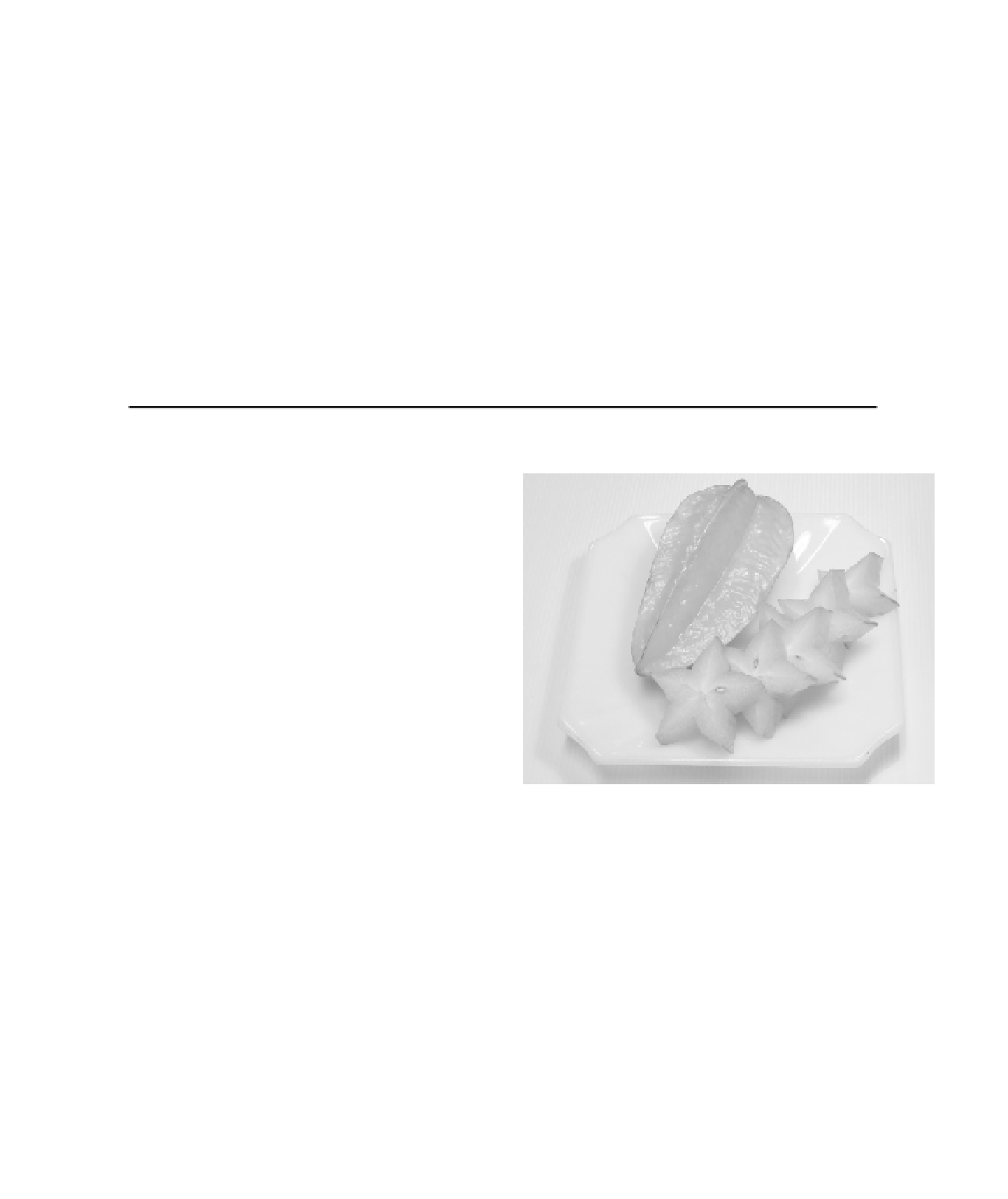Agriculture Reference
In-Depth Information
Table 12.3.
Nutritional profile of longan fruit.
Wong and Saichol
(1991)
Sukwiboon
(2004)
Deng et al.
(1999)
USDA
(2009)
Nutrient
Water (g)
72.4
81.1
81
82.75
Protein (g)
1
0.97
1.2
1.31
Fat (g)
0.5
0.11
0.1
0.1
Carbohydrate (g)
25.2
16.98
16
15.14
—
1
Fiber (g)
0.4
0.28
1.1
Calcium (mg)
2
5.7
13
1
Phosphorus (mg)
6
35.3
26
21
Iron (mg)
0.3
0.35
0.4
0.13
Vitamin A (IU)
28
—
—
—
Vitamin B
1
(mg)
0.04
—
0.04
0.031
Vitamin B
2
(mg)
0.07
0
0.03
0.140
Niacin (mg)
0.6
0
1
0.3
Vitamin C (mg)
8
69.2
60
84
1
Not reported.
Longan fruit contains a significant amount of phenolic
compounds. Rangkadilok et al. (2005) identified the major
phenolic compounds in longan peel, pulp, and seed as
gallic acid, corilagin (an ellagitannin), and ellagic acid.
Large variations in the phenolic contents were observed
in different plant tissues and different cultivars. The seed
contains the highest levels of the three phenolics, while
the pulp contains the lowest. Among commercial cultivars,
'Biewkiew' and 'Daw' contain the highest levels of gallic
and ellagic acid, while 'Chompoo' contains the highest
level of corilagin.
CARAMBOLA FRUIT
INTRODUCTION
Carambola (
Averrhoa carambola
L.), or star fruit, belongs
to the family
Oxalidaceae.
Carambola fruit is oval or el-
liptical in shape with three to five unique longitudinal ribs,
resulting in a star shape in cross section (Fig. 12.3). The
fruit length is normally 5-18 cm, depending on the culti-
var. The surface of the fruit is smooth, shiny, and waxy.
The unripe fruit is translucent, green, and firm. On ripen-
ing, the fruit becomes soft and juicy, and its color turns to
yellow, orange, or amber (golden brown). Each fruit may
contain up to 12 seeds, which are pale, flat, tender, and
embedded in the center of the juicy flesh. Tastes of fruits
may vary from sour-tart to mildly sweet, depending on the
cultivar and ripeness (Morton, 1987; Wu et al., 2004). The
fruits can be eaten fresh or processed into various products
Figure 12.3.
Fresh carambola fruit, with star shape
in cross-section. For color detail, please see color
plate section.
such as fermented or unfermented juices, dehydrated slices,
preserves, jam, jelly, canned fruit, and sweetened nectar.
ORIGIN AND MAJOR PRODUCTION
AREAS/COUNTRIES
The origin of this plant is believed to be in Sri Lanka and
the Moluccas. The major production areas in the world
are the tropical and subtropical regions in East Asia, in-
cluding Indonesia, Malaysia, the Philippines, Taiwan, and
the provinces of Fujian, Guangdong, Kuangsi, and Hainan


Search WWH ::

Custom Search